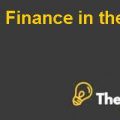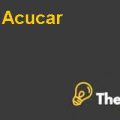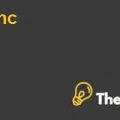
Introduction:
This report is about the Deutsche Bank’s research division. The division has a goal to a franchise with the fixed income clients. The idea is to generate higher return for the clients with asset side like; mutual funds, hedging fund, insurance companies and pension plans. The division will give an idea to its clients and the clients can implement the idea and generate higher cash flows or returns. The banks are not going to trade on the advice given by the division; however the presence of Deutsche Bank can create a willingness to act according to the advice provided.
Their idea to build a relationship with its external clients is to provide a research with the pricing. Through this, the clients can better know about price and the reason behind such price suggested by the division.
The financing methodology is to use interest rates, volatilities and spread to derive results for fixed income research. In fixed income, these three are the most important inputs to generate a pricing strategy for its clients.
Deutsche Bank organizes its fixed income activities into the global market through its identified three pillars; investor coverage, issuers coverage and research. The trading desk has only two groups; credit and rates.
Recently, the meetings with Deutsche Bank’s research department have increased due to their adaptation of this strategy. Baz’s group has logged over 1500 client meetings. The clients can access the data online and through the paper, as a result the external trading has increased.
Currently, the group is using relative-value and strategic advice on the macro trends, in the relative–value, the group has to comprise the opportunities and then advice to the internal traders and the clients. The relative-value comprises of the advice with the macroeconomic factors and then the final advice is communicated on the best market information. The view is generally long term that benefits to insurance companies and asset-liability people who come up with a long term benefit.
Problem Statement:
The problem faced by the management is to focus in which method to be implemented. It should either focus on both or only one, and if both then the series of the emphasis should be decided.
Analysis:
The analysis is about the approaches used by the group to derive the equity risk premium, implied equity risk premium changes over the time period and changes in the equity risk premium change over time make intuitive sense.
Using the approaches described, what is your group’s estimate of the equity risk premium?
The group estimates the equity risk premium through two methods; first one is Golden Growth model and another one is through earning yield against the real bond yield model. The results from both models are different due to the changes in the variables under both the models. The acceptability of both models is widely used in the real world.
Equity Risk Premium:
The equity risk premium is about the premium payment over the risk free returns by an entity or the market. The risk free rates are usually government bonds or treasury bonds those are considered to be risk free.
The risk premium is necessary to be paid because the investors are taking an extra risk over the other entity shares or bonds those who have a default risk for interest payments as well as principle amount. Due to this, the investors are asking for extra risk premium.Deutsch Bank Case Solution
Dividend growth model:
Under the dividend growth model, the equity risk premium is derived through the input of some variables; the variables can derive the equity risk premium through the input of the formula. In dividend growth model, the first thing to consider is the share price. The share price is based for the calculation and then the value of latest dividend. The current yield can be derived by dividing the dividend with the latest share price. In this case, the yield is only 1.64% as this can be said that the share price is $100 and its latest dividend is $1.64.
The dividend has been growing by 3.3% per annum. The percentage can be derived through the past history of the company’s dividends or through the plans of the company for growth of its dividends for the future years................
This is just a sample partial case solution. Please place the order on the website to order your own originally done case solution.












